Make It Stop!
Sensory Overload in ADHD
You dash into Starbucks to grab a much-needed cup of coffee, already feeling pretty fried after a long morning of zoom meetings and surfing through the treacherous sea of office politics. You are desperate for a little caffeine boost and the sweet soothing sensation of your favorite drink treat. But the moment you walk through the door, you’re hit with the dizzying overwhelm that is a Starbucks at 11 am. The music is pumping, the crowds of people are hovering, people are laughing and talking, the air is thick with the smell of freshly ground coffee, and the moment the barista yells a drink order, you feel like you’re going to explode.
What’s going on?
It’s called sensory overload. And while many people get overloaded from time to time, your ADHD makes it much more likely to happen to you.
Think you might have ADHD?
Take a free online assessment to find out.
(Takes 3 minutes)
TAKE THE QUIZWhat is Sensory Overload?
Sensory overload occurs when a person's senses become overwhelmed by stimuli in their environment. This can lead to an issue with processing and interpreting the information, resulting in confusion and difficulty paying attention.
It's like our brains are a computer, and sensory information are commands being entered into the system to process. If our system runs slowly or we enter too many commands at once, it overloads the system and starts to melt down.
And while auditory inputs like the sudden barking dog, loud chewing of your neighbor in the lunch room, or pumping bass of a passing car are some of the most frequent sensory meltdown triggers, they’re not the only ones by far. We can get overloaded by any of our sensory systems or, worse yet- all of them at once.
Flashing lights, harsh lighting, loud music, harsh sounds, loud, repetitive noises, noxious odors, itchy sweaters, dry skin, tight clothing, and bitter, spicy, or strong flavors can all flood our processing system and create an overload.
Why are ADHD brains more likely to have Sensory Overload?
While anyone’s processing system can get overloaded, sensory overload is particularly common for ADHD brains because of the unique way that they operate, including:
The Filterless Brain
The ADHD brain doesn’t tend to filter out irrelevant information. This is part of how it comes by its novel problem-solving and big-picture thinking, but it also means that everything around it flows right on in. So commands that other brains may be able to disregard get entered into an ADHD processing system full force, getting it that much closer to meltdown mode.
Stimulation Seeking
Not only do ADHD brains get hit by more information, but they also are brains that tend to seek out more stimulation. We need more to get us going than others do. So we go out in search of more- more information, more challenge, more inputs. And we're great as long as that more stimulation holds exactly the right level. But it means that it doesn’t take much to push us over the edge.
Processing Constraints
So we have these brains that are looking for more, unable to filter out extraneous information, and we already have a system more likely to overload and melt down. But there is one more factor that adds fuel to this messy fire: the processing constraints typical of ADHD brains.
Many ADHD brains have slower processing speeds and lower working memory capacity. So that computer trying to compute all these extra commands is doing so with last decades' RAM and operating system…. So it makes sense that it melts down- right?!?
What’s Sensory Overload Meltdown in Adults look like?
So we have brains more likely to get overloaded. But what does that mean? What’s it look like when our brain’s processing system goes into meltdown mode?
I probably didn’t need to ask (or answer that question-right?!?). You’re probably more than familiar with what this looks like. But just in case- let’s lay it out:
Sensory overload can lead to disorientation, distraction, confusion, anxiety, and rage reactions that are difficult to control. In its most mild form- when the system is just bogged down by too many commands at once- it looks like run-of-the-mill distraction and difficulty focusing.
But when the commands and sensory inputs just keep coming, then we enter meltdown mode. Then it’s not just how well our brains function, now all of those inputs start to feel like an assault on our nervous system, and we enter fight/flight/freeze mode- shutting down rational thinking with the sole intention of getting out of the situation.
6 Tips for How to Stop Sensory Overload
You’ve got this ADHD- it's got some incredible superpowers and tremendous advantages. But like all great advantages, it has its risks and vulnerabilities too. Sensory overload is one of these vulnerabilities. So the trick is to steel ourselves from its impact to minimize its risk, allowing us to take advantage of all of our advantages. Here are some tips for doing just that:
Create a Trigger List
Every ADHD brain is unique, and every life is unique, so what triggers one person’s sensory overload may not trigger another. But when we know the things that are most likely to trigger sensory overload, we can not only think ahead of time about how to handle them, but we may be able to avoid them as well.
Creating a list of your most common triggers is a great way to do this. I know- it’s really tempting to just do this in your head, but writing it down really helps. It allows you to think it through more fully while providing something you can refer back to or add on to. Once you have a list of the things that often trigger your overload, you can go through it and ask yourself- is there a way I can avoid this trigger? When does this trigger happen? What can I do to minimize how this trigger impacts me?
Block Sensory Inputs
Because sensory inputs tend to build on each other, tools like noise-canceling headphones, earplugs, blue-light filtering glasses, tagless clothing, sunhats, and umbrellas and saying no to loud, busy social obligations can go a long way to reducing sensory overload because they keep your nervous system farther from meltdown levels.
Increase your Inputs
I know! Sounds crazy! This is a post about being overloaded- why on earth would we want to increase our inputs?!?
Remember I said that ADHD brains tend to need more stimulation to activate and, therefore, sometimes seek out extra and wind up getting overloaded? Well, we can take a page out of the sensory diets of our kids by intentionally adding in just enough stimulation to keep our system regulated and focused but not so much we can’t handle it.
How do we do that?
Think through your day; when are you most likely to feel dysregulated? When does your attention falter? Those are the times you want to add in a bit of sensory stimulation with things like:
Standing on a wiggle board,
sitting on an exercise ball,
Listening to instrumental music
Listening to Brown noise
Playing with Fidgets
Knitting
Getting A tight hug
Weight lifting, a quick set of push-ups or jumping jacks
Wrapping yourself in a heavy blanket
Rocking in a rocking chair
Practice Calm Down Strategies
But we don’t just want to offer more stimulation. We need strategies to help us respond when life offers more sensory stimulation than our systems can handle too.
And just like we don’t wait until game day to practice our championship-winning strategies- they’re too important. Our calm-down strategies are equally (ok- actually WAY more) important. So we need to give them just as much attention. If we wait until our system has already melted down and expect ourselves to suddenly be able to calm ourselves down, we’re just as likely as the unprepared quarterback to fumble the ball.
How do you practice calm-down strategies? First, you want to brainstorm a couple of options. Things like going for a walk, deep breathing, screaming into a pillow, crying to a friend, meditation, or lying in a dark room are all possible strategies. Once you have a list of several that might work for you, see if you can pair and practice a few of them throughout the day. Can you practice 5 deep breaths every time you wash your hands? Can you take a 10-minute walk after lunch? Can you prep the cool compress that you’ll use? Can you take a soak in a tub a couple of nights a week as you are getting ready for bed? Can you watch your kids' fish tank while having your coffee each morning?
Get in Motion
When our systems are Overloaded or on the brink of overload, it taxes our nervous system, ramping us up into fight/flight/freeze mode. And that mode is all about action and movement. Getting into motion does the job of that mode, spending its energy and helping us calm down and relax. Having a regular practice of exercise allows an ADHD to regularly offload some of that extra stimulation. But using motion as a calm-down is a great strategy too.
Use Task Management Strategies
One of the reasons ADHD brains are more likely to cross the threshold into sensory overload is that we can be so easily overwhelmed by the logistics and tasks of life. Having and using task management and planning strategies can be key in reducing that extra load, making us less likely to tip over into meltdown mode.
Ready to shift from
meltdown to mastery?
This online course has been designed specifically to help teach the strategies ADHD brains need to help them move from overwhelm and meltdowns to confident emotional mastery.
Want to know more about
thriving with ADHD?
Check out these other articles:
References:
1. Craig B. H. Surman, Joseph Biederman, Thomas Spencer, Carolyn A. Miller, Katie M. McDermott, and Stephen. Faraone.Understanding deficient emotional self-regulation in adults with attention deficit hyperactivity disorder: a controlled study.ADHD Attention Deficit and Hyperactivity Disorders.September 2013, Volume 5, Issue3,pp 273–281
2. Lane SJ, Reynolds S. Sensory Over-Responsivity as an Added Dimension in ADHD. Front Integr Neurosci. 2019;13:40. doi:10.3389/fnint.2019.00040
3. Shaw P, Stringaris A, Nigg J, Leibenluft E. Emotion dysregulation in attention deficit hyperactivity disorder. Am J Psychiatry. 2014 Mar;171(3):276-93. doi: 10.1176/appi.ajp.2013.13070966. PMID: 24480998; PMCID: PMC4282137.
4. Shimizu VT, Bueno OF, Miranda MC. Sensory processing abilities of children with ADHD. Braz J Phys Ther. 2014;18(4):343–352. doi:10.1590/bjpt-rbf.2014.0043
5. Stern A, Agnew-Blais JC, Danese A, Fisher HL, Matthews T, Polanczyk GV, Wertz J, Arseneault L. Associations between ADHD and emotional problems from childhood to young adulthood: a longitudinal genetically sensitive study. J Child Psychol Psychiatry. 2020 Nov;61(11):1234-1242. doi: 10.1111/jcpp.13217. Epub 2020 Feb 29. PMID: 32112575; PMCID: PMC7483180.

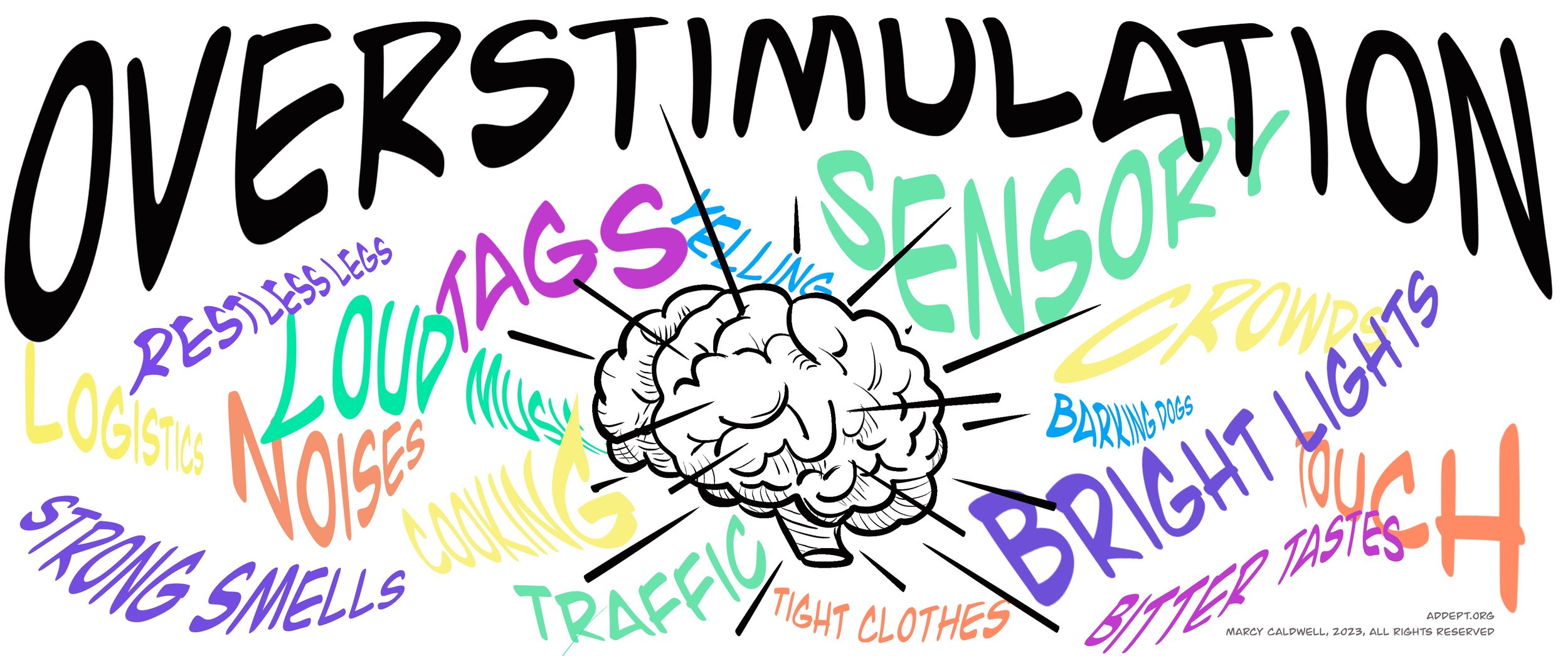


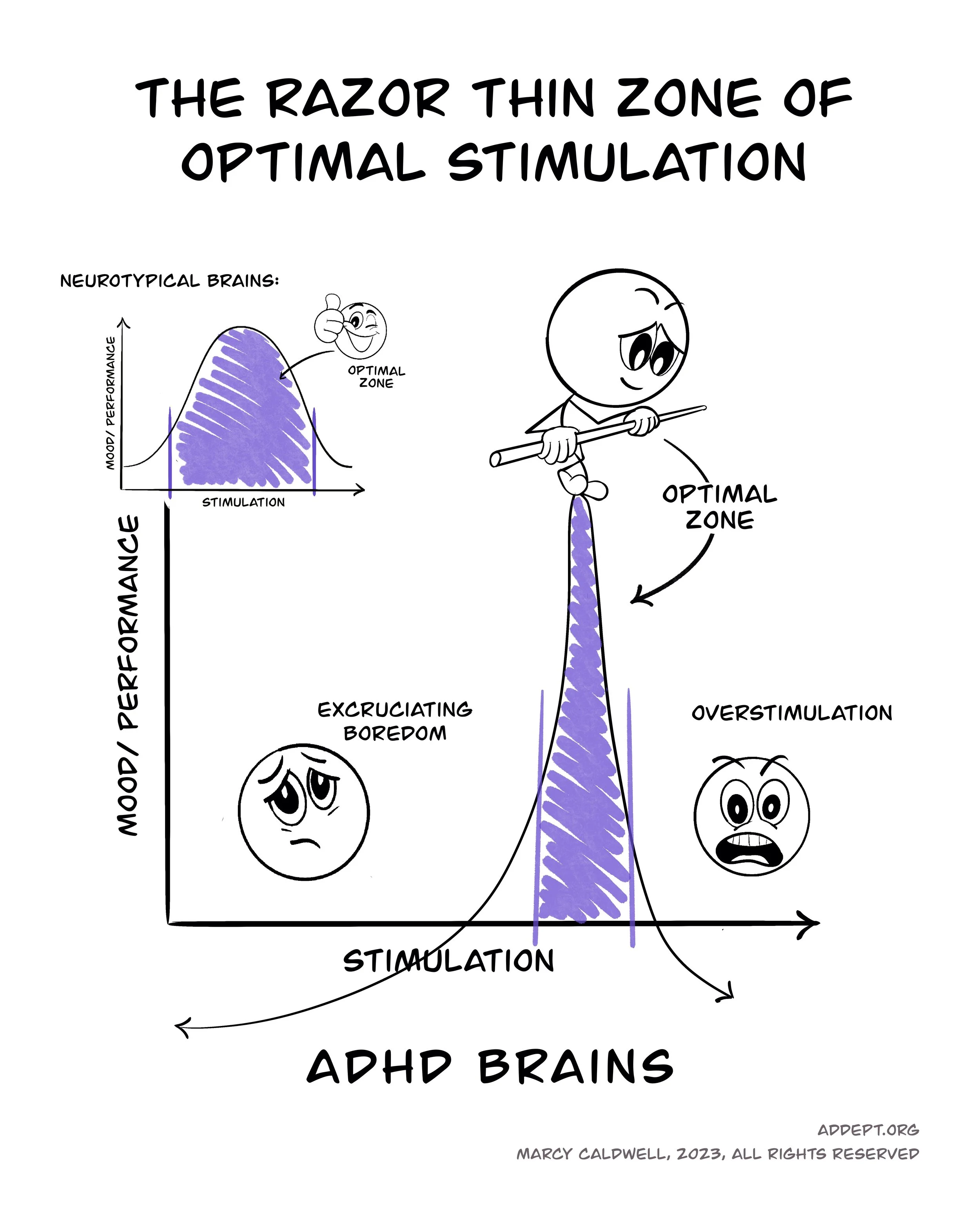
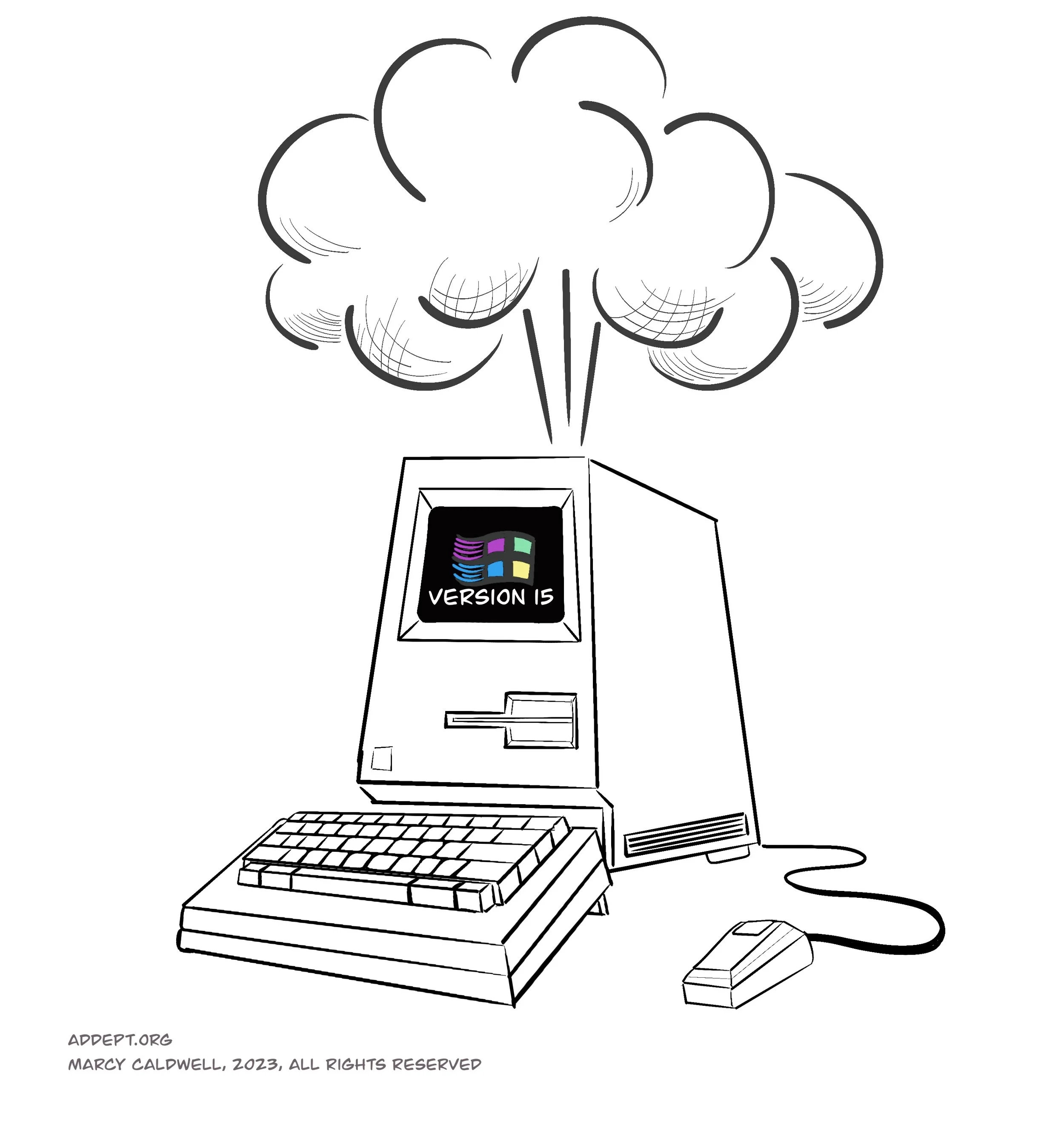
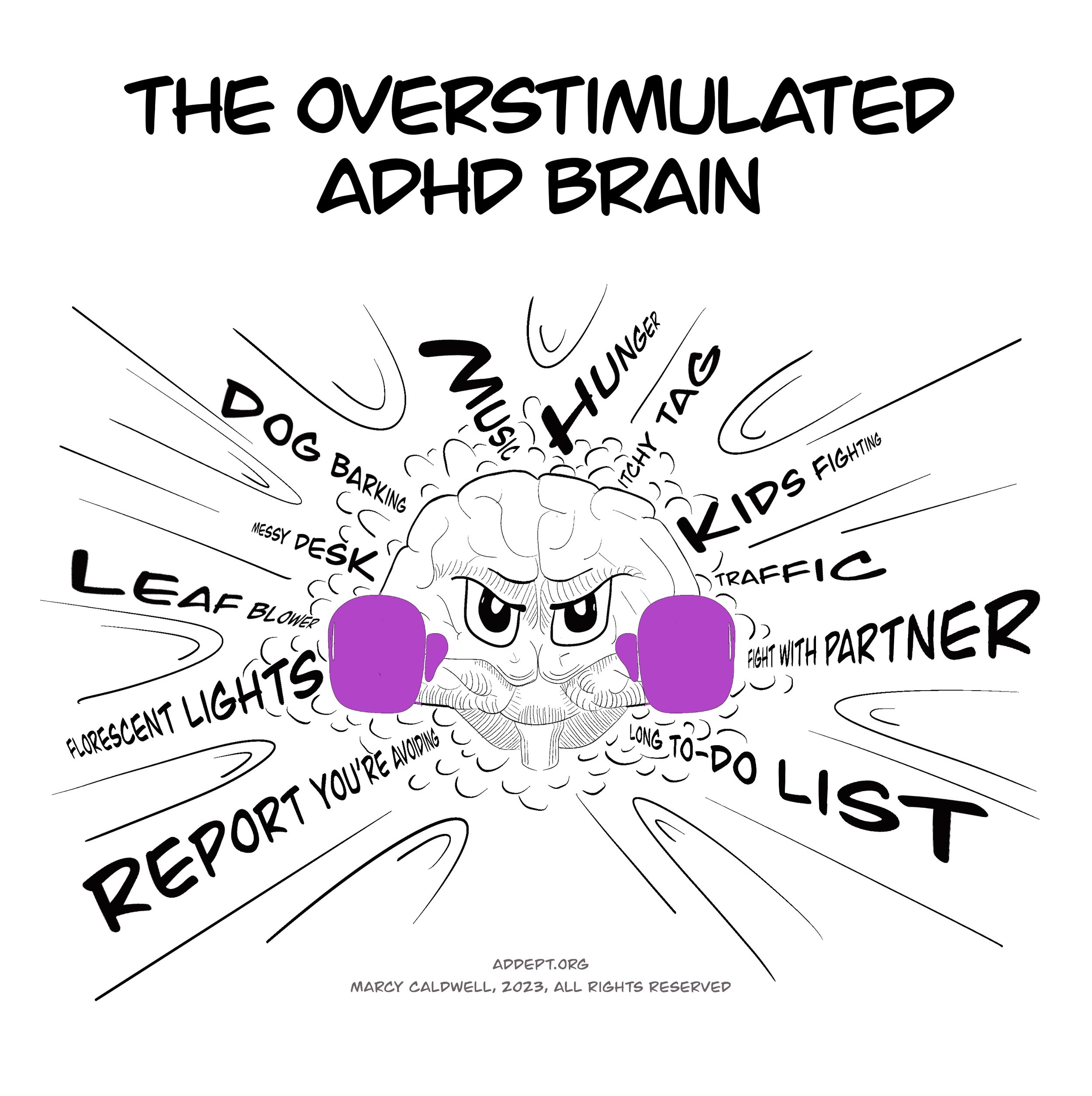
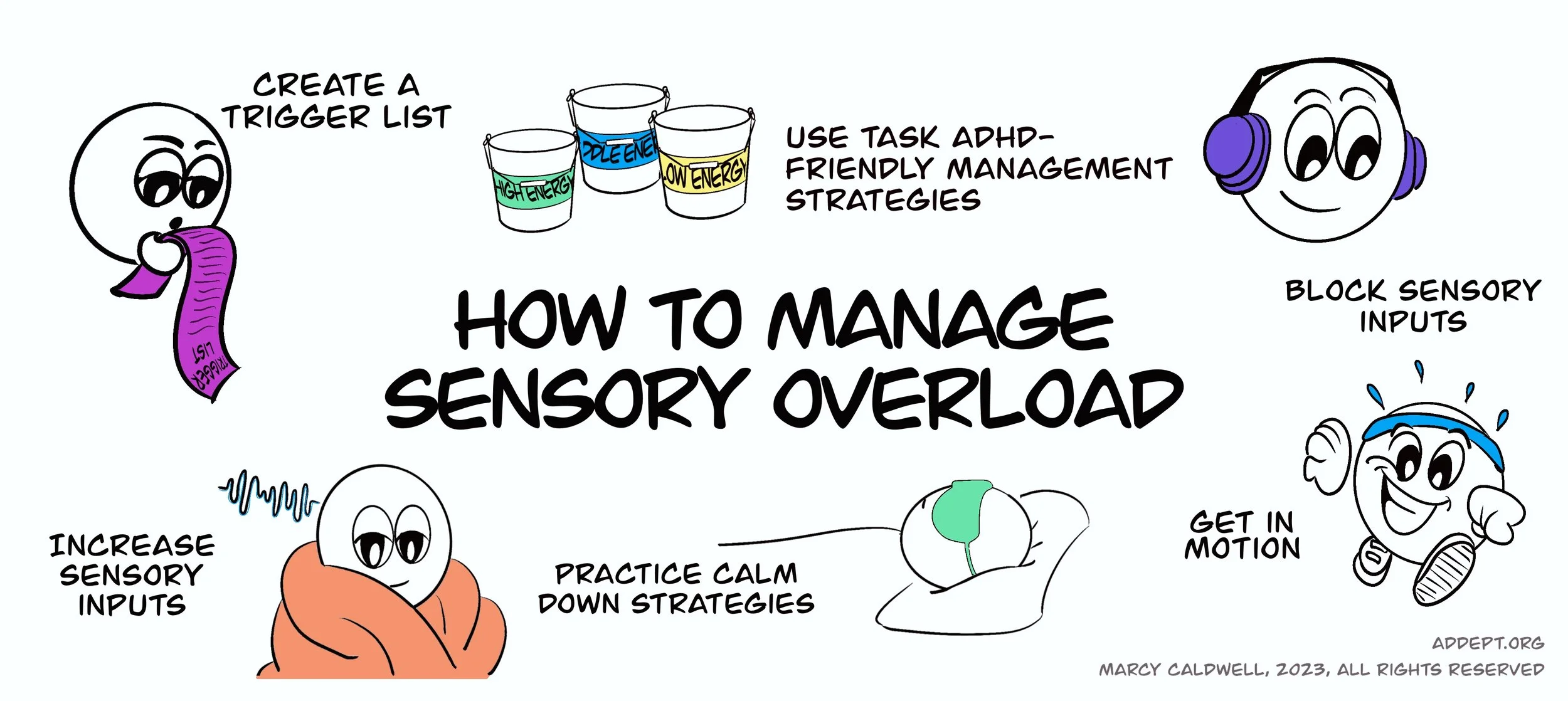











Finding Your ADHD Sweet Spot: Navigating Optimal Stimulation for a Balanced Brain